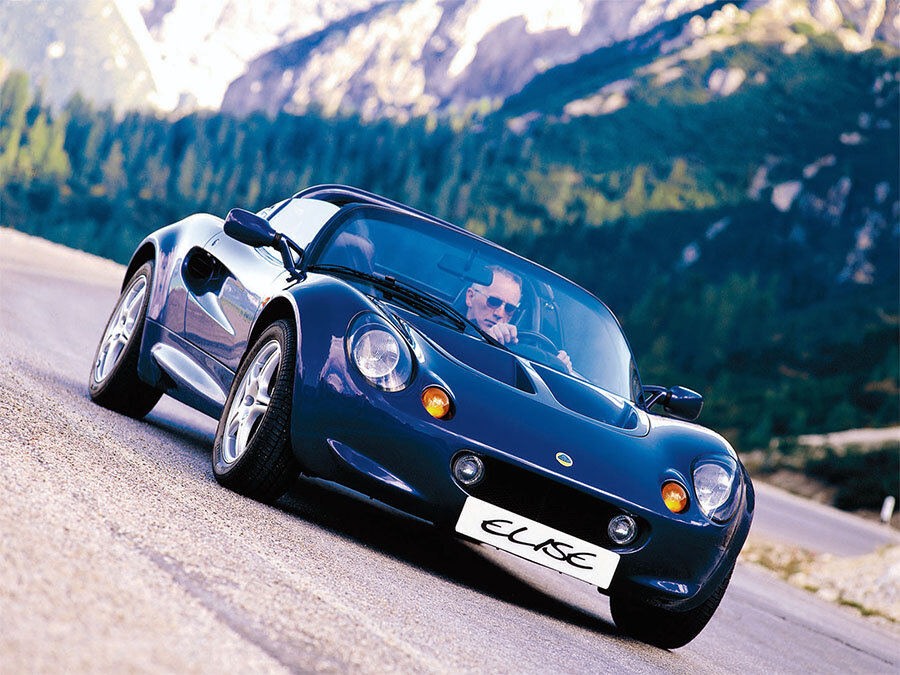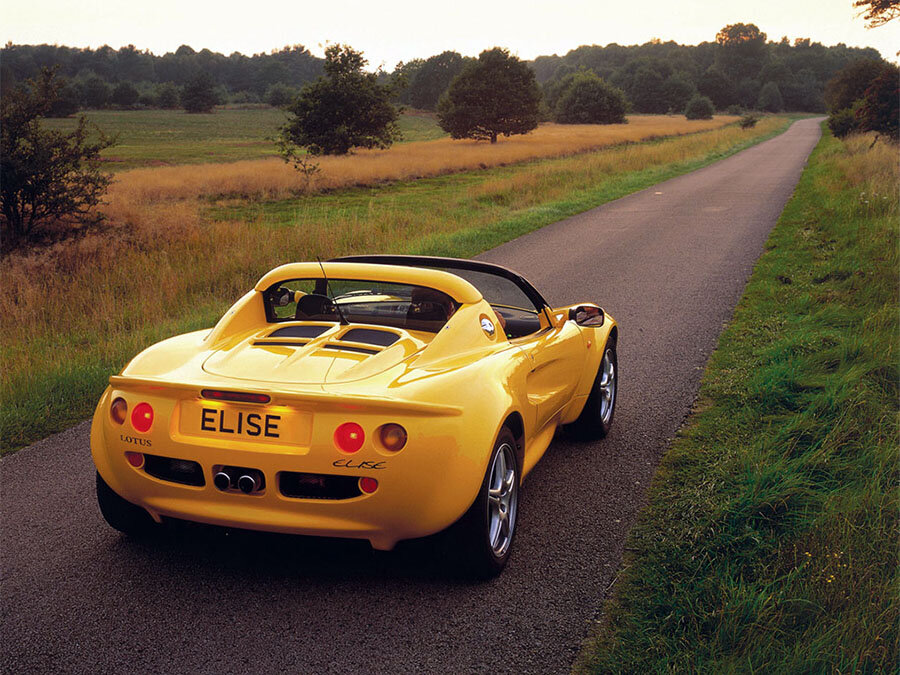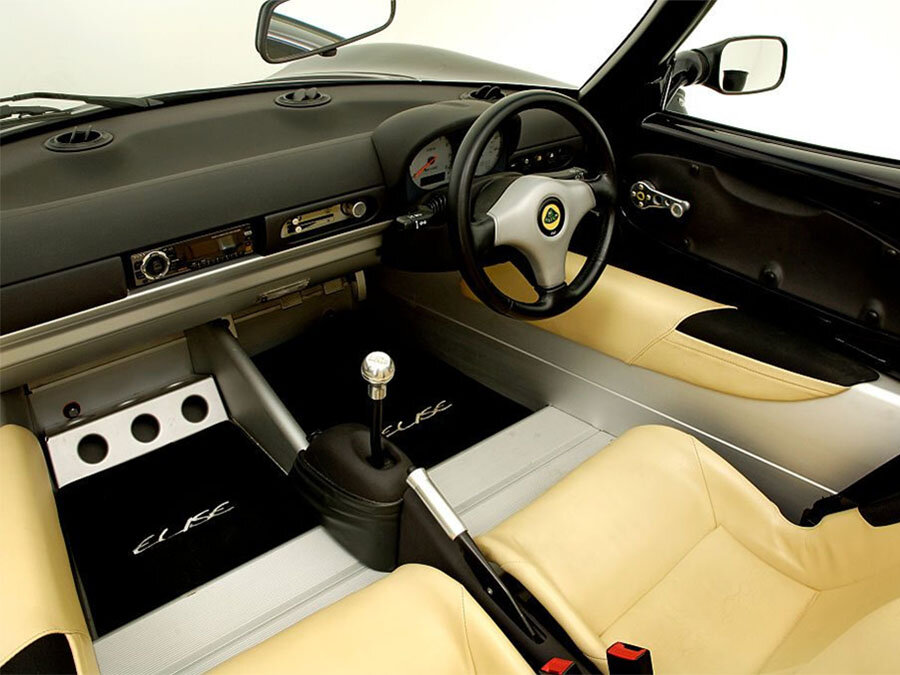Guide: Lotus Type 111 Elise S1 - a Historical & Technical Appraisal
/BACKGROUND
At the Frankfurt Motor Show in September 1995, Lotus unveiled a super-lightweight two-seat roadster to replace the ageing M100 Elan. Known as Elise, it took the firm back to company founder Colin Chapman’s ethos of: “if you want to go faster, you have to add lightness“.
Development work on the Elise started in early 1994. Production began a little over two years later in June 1996.
The Elise joined the V8-engined Esprit in the mid 1990s Lotus range. The Esprit platform could trace its origins back to the S1 of 1975. Back then (and throughout the 1980s), the Esprit had been offered alongside much larger front-engined 2+2 Coupes like the Elite, Eclat and Excel.
However, the move into the sophisticated, slightly more luxurious sporting four-seater market (which was originally instigated by Chapman himself), was ultimately abandoned.
In 1989, the M100-powered Elan roadster was introduced. Although it went against Lotus tradition on account of its front-wheel drive layout, the M100 began the firm’s transition back towards the kind of pure two seat sports cars for which they had become renowned.
The Elan M100 was the first clean sheet model brought in by General Motors. GM had purchased Lotus Cars in 1986 (from the group of investors that saved the company from near bankruptcy in 1983).
However, during the early 1990s recession, General Motors looked to get the British sports car maker off their books.
They found a buyer, ACBN Holdings, in August 1993.
ACBN was a Luxembourg-based holding company controlled by Italian industrialist and motor car distributor, Romasno Artioli. Artioli was also the man behind Bugatti’s revival.
Artioli paid General Motors £30m for the company. He named the new car Elise after his grand-daughter.
CHASSIS
Compact and simple but packed full of advanced technology, the Elise was built around a state-of-the-art epoxy-bonded aluminium spaceframe with integral steel roll-over hoop.
Designed in conjunction with Hydro Aluminium Automotive Structures, the finished chassis was extremely light (68kg) and incredibly strong. Torsional rigidity was excellent as was durability. The wheelbase measured 2300mm.
Importantly, the Elise chassis was straightforward to manufacture.
Suspension was fully independent: upper and lower wishbones, co-axial coil springs over inverted monotube dampers and Lotus-patented extruded aluminium uprights.
The brake system comprised Lanxide aluminium Metal-Matrix 282mm ventilated brake discs with AP Racing calipers at the front and Brembo calipers out back.
Twin-spoke alloy wheels were manufactured for Lotus by AWI; they measured 5.5 × 15-inches at the front and 7 × 16-inches at the rear. These originally came shod with Pirelli P Zero tyres.
Power-assistance for the steering was deemed unnecessary.
A 40-litre fuel tank was located under the rear of the cockpit floor.
ENGINE / TRANSMISSION
Whereas the outgoing Elan had used an engine sourced from Isuzu, for the Elise, Lotus opted to fit Rover’s all-alloy, dual overhead camshaft 1.8-litre K-series inline four. The wet-sump engine had a four valve cylinder head and displaced 1796cc thanks to a bore and stroke of 80mm and 89.3mm respectively.
Lotus mounted the engine transversely on a steel subframe bolted to the back of the spaceframe.
Engine management was courtesy of a MEMS 1.9 system. Electronic ignition was supplied by Motorola.
With compression set at 10.5:1, peak output was 118bhp at 5500rpm and 122lb-ft at 3000rpm.
Transmission was through a five-speed transaxle gearbox and single-plate clutch.
The combined weight of engine and transmission was a mere 130kg.
BODYWORK
An in-house design team led by Julian Thompson styled a curvacious roadster body that tapped in to the trend for retro lines.
Glassfibre composite was used throughout; the front and rear clamshell sections were detachable for easy access to the running gear.
The era of pop-up headlights was by now well and truly over. Lotus fitted fixed uncovered lenses high up on the front fenders in a manner that evoked sports prototype racing cars of the late 1960s. Handsome covers for the headlights were available as an optional extra.
Fresh air was fed through a wide oval nose intake. It was then extracted via two huge curved vents further up the body. A large cooling scoop down each flank fed cool air into the engine bay.
The design was further enhanced by its panoramic domed windscreen and modern single-piece side windows. Behind the seats was a hefty roll over bar integrated with flying buttress sail panels.
The rounded tail was home to four simple circular lights and two arced mesh cooling vents either side of the twin-pipe centrally exiting exhaust.
Additional downforce was created by the front winglets, the full-width rear spoiler and an underbody diffuser.
INTERIOR
Inside, the cockpit was only partially upholstered (the sills, door panels and seats). The upper dash and transmission tunnel metal were given a dark grey textured finish, the rest of the surfaces were left in bare aluminium.
The curved two-gauge instrument binnacle housed analogue read outs for road and engine speed. All other vital statistics were accessed via the Stack digital readout located at the base of the two main dials.
Single-piece bucket seats could be adjusted fore / aft only. To give the driver the clearest possible vision, the driver’s seat was positioned closer to the centre of the car than the passenger’s (which was fixed in the rearmost position).
Standard specification included wind-down windows and floor mats.
OPTIONS
Buyers could enhance their cars with a variety of optional extras.
The list of upgrades available included a body-coloured hard top, leather seats, metallic paint, spot lights, a radio fitting kit and an alarm / immobiliser. The soft top could also be specified in a shade other than black.
For countries with very hot climates, air-conditioning was optional. However, air-conditioning was not officially offered in European markets.
Later, headlamp covers, wider 7.5-inch rear wheels and re-shaped 111S-type seats with deeper foam cushions became available.
WEIGHT / PERFORMANCE
Despite its modest 118bhp, the Elise redefined what was possible from a modern two-seat roadster. Its handling capability and driving dynamics set new standards for sports car manufacturers; the new machine truly was something Colin Chapman would have been proud of.
Because it weighed an astonishingly low 755kg and was extremely well engineered, the Elise handled like a go-kart. It could hit 62mph in just 5.8 seconds and 126mph flat out.
PRODUCTION BEGINS
Deliveries began in June 1996. Road testers raved about the new car and it wasn’t long before a considerable waiting list had built up.
During this period, the majority owner of Lotus Cars changed again. In 1996, Malaysian car company Proton took control.
JUNE 1998 PRODUCTION CHANGES
In June 1998, owing to rising cost and supply problems, the Metal-Matrix brakes were no longer fitted. Instead, standard cast-iron discs were used along with a new type of pads.
STAGE 2 KIT
During the summer of 1998, Lotus announced that existing that Elise owners could order an after-market Stage 2 tuning kit from their local dealer.
The Stage 2 kit comprised a ported and polished cylinder head with a VVC plenum and a sports exhaust complete with de-cat pipe.
Peak power officially went from 118bhp at 5500rpm to 135bhp at 6200rpm.
The torque rating was now 129lb-ft at 4250rpm compared to 122lb-ft at 3000rpm for the standard car.
Because installation of the Stage 2 kit necessitated removal of the catalytic converter, the Sport 135’s manufacturer warranty no longer applied.
ELISE 111S
In January 1999, Lotus added an even faster Elise to the range: the Type 111S / Elise S.
Significantly, the 111S featured a 143bhp K-series engine with Variable Valve Control head. The 111S (covered separately) also featured a close-ratio gearbox plus brake, wheel, tyre and aero upgrades.
ELISE 50TH ANNIVERSARY SPECIAL EDITION
In addition to the 111S, Lotus also announced a limited run of 50th Anniversary special editions in January 1999.
50 were built. They were assembled exclusively on the non-111S entry-level 118bhp platform.
The specification comprised special anniversary metallic green paint, gold wheels, dark green leather upholstery with fawn alcantara seat centres and custom decals.
APRIL 1999 PRODUCTION CHANGES
In April 1999, Lotus switched the Elise from the five twin-spoke AWI wheels to a new twelve-spoke design by Rimstock.
ELISE HERITAGE / 79 SPECIAL EDITION
In July 1999, the John Player Special-inspired Heritage / 79 was announced.
Unlike the 50th Anniversary, this latest variant was available on the standard and Elise S platform
The Heritage / 79 edition was a limited run of 150 vehicles. Externally, the specification comprised black paint, gold wheels, gold grilles and a black and gold nose badge. The cockpit was configured with black leather upholstery, gold alcantara seat centres, a black and gold alcantara steering wheel, gold dash fascia and custom decals.
If a Heritage / 79 was ordered on the base model 118bhp Elise, the wheels, seats and headlamp covers were imported from the 111S.
ELISE 49 SPECIAL EDITION
As production was coming to an end, more special editions were announced in October 1999 (at the London Motor Show).
Like the John Player-inspired colour scheme of the Heritage / 79, the livery of this latest offering was homage to an iconic Formula 1 livery: Gold Leaf Tobacco. Accordingly, the new Elise 49 special edition was dressed up with a white lower body, gold coachline and red upper body.
The rest of the specification featured gold wheels, black leather upholstery with red alcantara seat centres, a black and red alcantra steering wheel and custom decals.
The 49 package was available on both the 118bhp and 143bhp platforms. Entry-level versions ordered in 49 trim were equipped with 111S wheels, seats and headlamp covers.
Production totalled 134 units, a handful of which were completed with yellow upper body and some with silver wheels.
ELISE MILLENNIUM SPECIAL EDITION
Launched alongside the Elise 49 at the London Motor Show in October 1999 was the more subtle Millennium limited edition.
It came with special Atlantis Blue Pearl paint and black leather upholstery. Blue alcantara was used for the seat centres, steering wheel and sills.
As usual, 118bhp versions came further enhanced with 111S wheels, seats and headlamp covers.
Around 50 Millennium edition Elise were built.
NOVEMBER 1999 PRODUCTION CHANGES
In November 1999, forged steel rear hub carriers replaced the original extruded aluminium components.
END OF PRODUCTION
Production ended in late 2001 after a little over 10,500 Elises had been built, 8613 of which were to this base specification.
A face-lifted Series 2 Elise arrived in early 2002.
Text copyright: Supercar Nostalgia
Photo copyright: Lotus - https://www.lotuscars.com





































